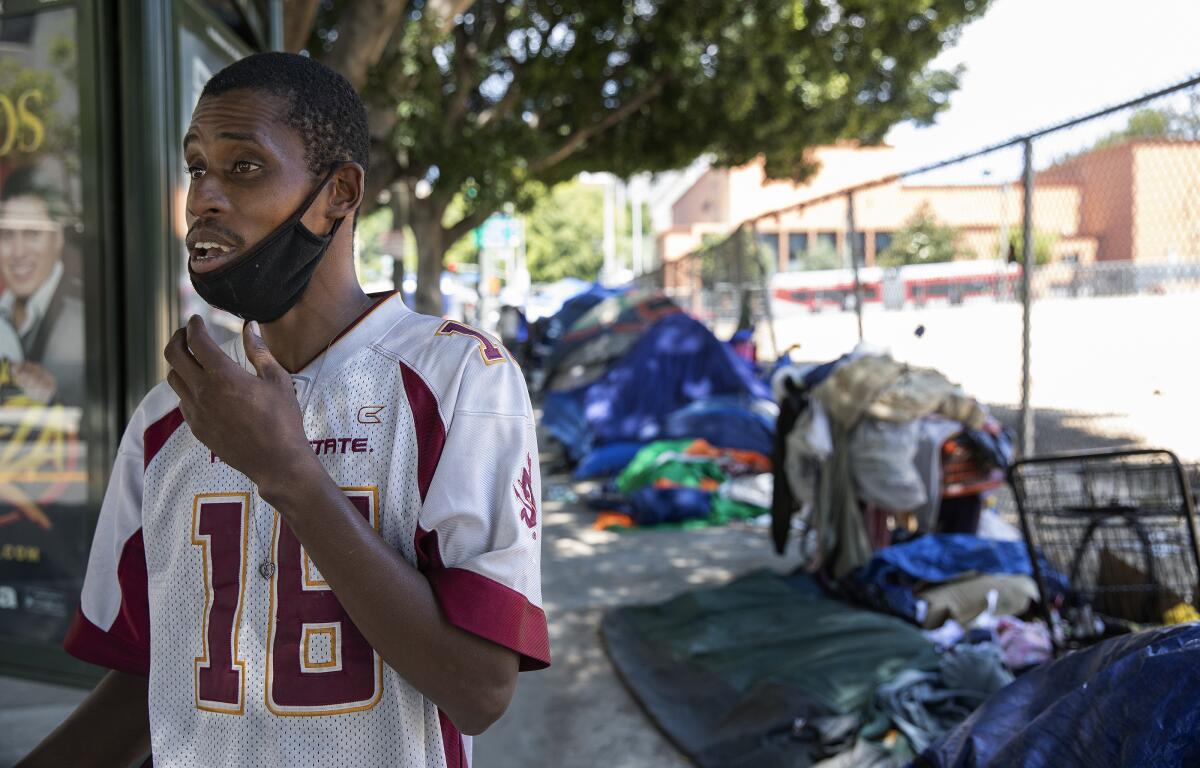Editorial: Another commission to study homelessness? Get serious, supervisors

While there is a shortage of housing for homeless people, there is no shortage of studies on Los Angeles’ efforts to deal with homeless people. Since February alone there have been four reports released on how effectively and smoothly the city and County of Los Angeles provide outreach, rental assistance, housing and other services to the local homeless population.
Nonetheless, prepare for another one.
Last week a divided Los Angeles County Board of Supervisors voted 3 to 2 to create a Blue Ribbon Commission on Homelessness. The commission will focus mainly on the structure of the Los Angeles Homeless Services Authority, the agency responsible for carrying out the city and county’s homelessness service plans. The authority — commonly known as LAHSA — neither creates nor builds housing. Instead, it contracts with service providers, does street outreach, moves people into temporary and permanent housing, and administers nearly $1 billion in city, county, state and federal funding for that work.
Supervisor Kathryn Barger, who introduced the proposal to create the commission, said in an interview that her goal is “to reevaluate the governance, the mission, the leadership and the structure” of LAHSA. She also wants to bring to the table smaller cities in the county that believe they have not gotten enough funding from the authority. The commission would look at the workings of other regional homelessness agencies across the nation and, here in L.A., examine the homeless services that the county is funding, the limits on the supply of affordable housing and the effectiveness of existing mental health services, Barger said.
But as Supervisor Sheila Kuehl, who voted against this proposal, made clear, another commission is a waste of time. “There is no silver bullet about homelessness,” Kuehl said at Tuesday’s supervisors meeting. “There is no sudden new something we never thought of that is going to come out of this. This I think will actually simply take a lot of time, come up with the same recommendations that we’ve heard from the four reports we got in the last 12 months about LAHSA and homelessness, and then we will be faced with the same question about action or lack of action that we have been facing in trying to get anything done here.”
LAHSA was created by the city and the county in 1993 to address homelessness regionally. Ever since, the high-profile but not that powerful agency has been a convenient scapegoat for officials looking for cover when the homeless count increases or encampments get too big and constituents complain.
That said, it is time to take a look at how well LAHSA functions, how well it connects with all the cities in the county in its jurisdiction and how well it works with elected officials. Is the agency expected to house homeless people when there simply isn’t enough permanent housing? Even LAHSA Executive Director Heidi Marston says the status quo is unacceptable.
Marston points out that over the last three years, LAHSA has placed 66,000 people into permanent housing. The homeless numbers have gone up over that time period because more people fall into homelessness each year than get out of it. Only preventive measures stop inflow, and prevention is not part of LAHSA’s portfolio.
The supervisors don’t need a commission to tell them that. But since one has been created anyway, it should do more than look at how to restructure LAHSA or withdraw from it. Barger insists that she does not intend to “blow up” LAHSA. But if the commission does recommend dismantling LAHSA or withdrawing from it — as some City Council members want to consider — the city and county would have no choice but to create another entity — or entities — to do the vast amount of work that LAHSA does.
They couldn’t just defund LAHSA. It would have to be replaced. The commission should invite LAHSA officials to the table to get their input.
If the commission really wants to tackle homelessness and engage the smaller cities, it should ask how many of those cities have programs to help residents hold on to their housing when they’re at risk of falling into homelessness. How many have invested in permanent housing projects? This would be a chance for smaller cities to pledge to save or create housing.
The commission will have a dozen members. Each supervisor gets to appoint one. Barger caused an outcry when she tried to appoint Dr. Drew Pinsky — the TV personality who believes homelessness is a result of mental health and addiction issues, not exorbitant housing costs — to the LAHSA Commission, which oversees the agency. She wisely withdrew his nomination. This time, she said, whomever she appoints to the commission, it will not be Pinsky. That’s a good start.
More to Read
A cure for the common opinion
Get thought-provoking perspectives with our weekly newsletter.
You may occasionally receive promotional content from the Los Angeles Times.










